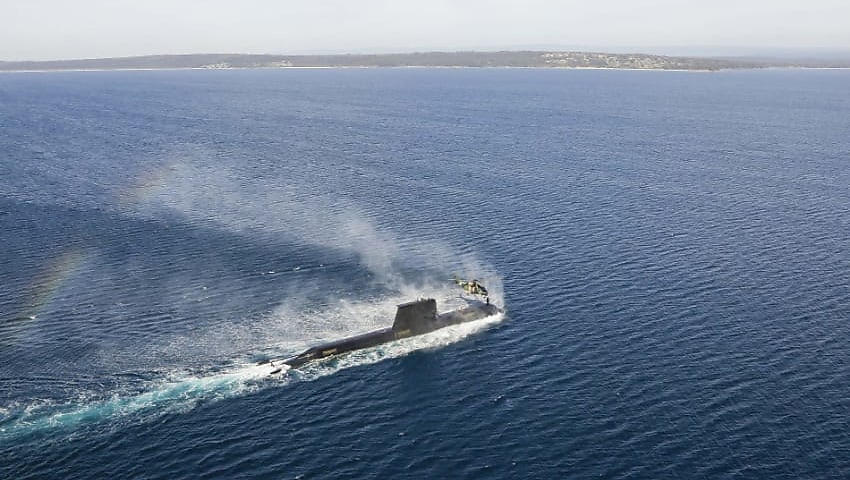Opinion: Halloween is upon us, and the federal budget assured the steady growth of Defence spending to exceed 2 per cent of gross domestic product in spite of inflation, other domestic commitments or rising AUD currency costs for imported materiel, writes former naval officer and defence industry analyst Chris Skinner.
Meanwhile, the USA has published its National Security Strategy and now also the National Defense Strategy, neither of them surprising in their focus on China and Russia. Back here, there is a continuing vocal call for greater sovereignty to resist the apparent increasing engagement with the USA, and to a lesser extent the UK, and even Japan.
The Australian Defence Strategic Review is well underway with public submissions closing last weekend and an interim statement from the team of two high-profile reviewers expected this week. In contrast are the work of the modest Hunter Class frigate review team due to report before the end of the year, and the extraordinary Nuclear Powered Submarine Task Force numbering some 350 people.
And the submarine team aren’t even covering the other AUKUS technologies of cyber, quantum computing, undersea sensing, information and electronic warfare, hypersonic missiles and other defence innovation.
The grim reality is that Australia has a lot of fundamental thinking to be done and an even more daunting challenge to educate the community into the realities of national security and defence to accept the full range of vulnerabilities and defensive needs. Warfare in the 21st century has changed irrevocably to a whole of nation activity, with the current conflict in Ukraine as ample evidence of this being so. And that extends all the way in extremis to nationalisation of critical assets and infrastructure to conscription of armed force personnel from the community and the need for online and social media for deliberate disinformation and propaganda.
There is no guaranteed protection from economic, demographic, and even physical coercion for all people who might be considered part of a nation under attack.
For Australia, therefore, we need a national security strategic planning framework, and the Australian Defence Force should correctly form a critical part of that. But so also must the international diplomatic, border force and economic transfer organisations that work within multinational and international organisations, notably the United Nations and its ancillary bodies.
Looking forward to 2023 and following years, the challenges won’t be primarily economic; rather there will be time constraints to decide what is needed and then implement the many necessary steps to enhance national security. So, we should discourage all the armchair economic analysts from viewing national security as a financial matter and instead call upon political, military and industrial expertise to tell us what we need to do and how to get it done. Defence Strategic Review team, please note our keen interest in what you have for us to understand and implement.
But what of Australian sovereignty, some may ask. The truth is, we have full control over our own domain both physical and virtual but within that domain, we rely for our comfort and continuation of our customary way of life on the intercourse with other nations and that takes place sometimes within other third-party domains. I refer to air and sea lines of communication, including undersea cables and satellite-based communications carrying financial and other informational transfers.
So our sovereignty is therefore qualified by the degree to which we rely on that external intercourse, and at the same time, the degree to which we are prepared to endure any reduction in our way of life should the intercourse be interfered with or blockaded.
More experienced nations, especially the great powers, know full well the processes of resisting interference and on the other hand, the imposition of interference on others. They have no altruistic illusion of a nation acting in any other manner except its own best interests. Time for Australia to stand up in a similar manner.
The recent history is our greatest challenge — pandemic and climate change — both wicked problems for the world with a wide range of elicited responses. Australia’s own responses were reasonably effective for the pandemic and marginally consistent with world practice for climate. What is still to come however, is the further increase in adverse effects of climate change and the resulting inflationary effects on energy availability and pricing, and resulting international competition for scarce resources.
The zero-carbon fixation is nowhere near likely to fix the whole climate problem, which will result in wholesale relocation of people from hard-hit areas, adoption of completely new criteria for location and energy demands of housing and commercial infrastructure. And there will be much greater competition for rare earth minerals and for the effective recycling of all forms of waste products.
The Australian Defence Force (ADF) therefore needs to adapt its thinking on concepts of operations to a world in which it is only the tip of the spear for response to whole-of-society attacks within a changing geophysical and technological environment.
The days of pitched battles along a fighting front may not have passed completely but there will be many other forms of combat in which the ADF will be called on to participate but much more likely the conflict is occurring within centres of population with concurrent social media and information warfare occurring in financial and other online infrastructure.
Trick or treat? Will the ADF be ready?
Christopher Skinner served 30 years in the Australian Navy as a Weapons and Electrical Engineering Officer in six surface warships in the South-East Asian Treaty Organisation, the Vietnam War and North-West Indian Ocean surveillance. Shore postings included secondment to the Defence Research Centre, Salisbury SA, the US Naval Sea Systems Command to manage lead ship trails for a join frigate project and initial project director for the ANZAC frigate program of 10 ships for Australia and New Zealand. He is a member of several engineering and geopolitical institutes, but the views here are his own.



